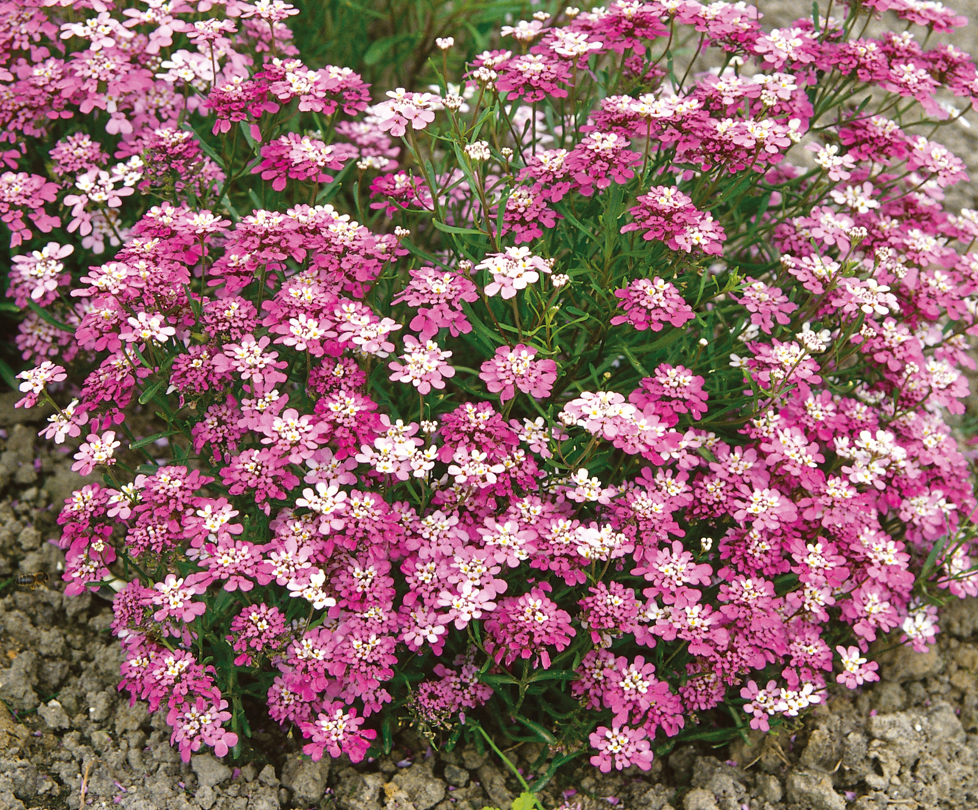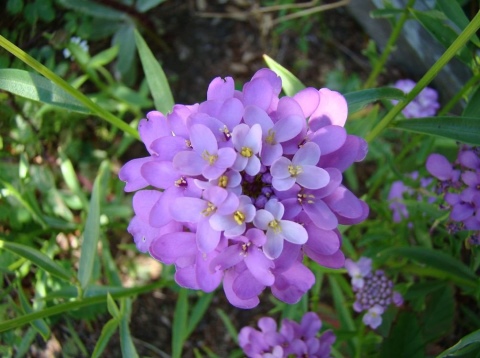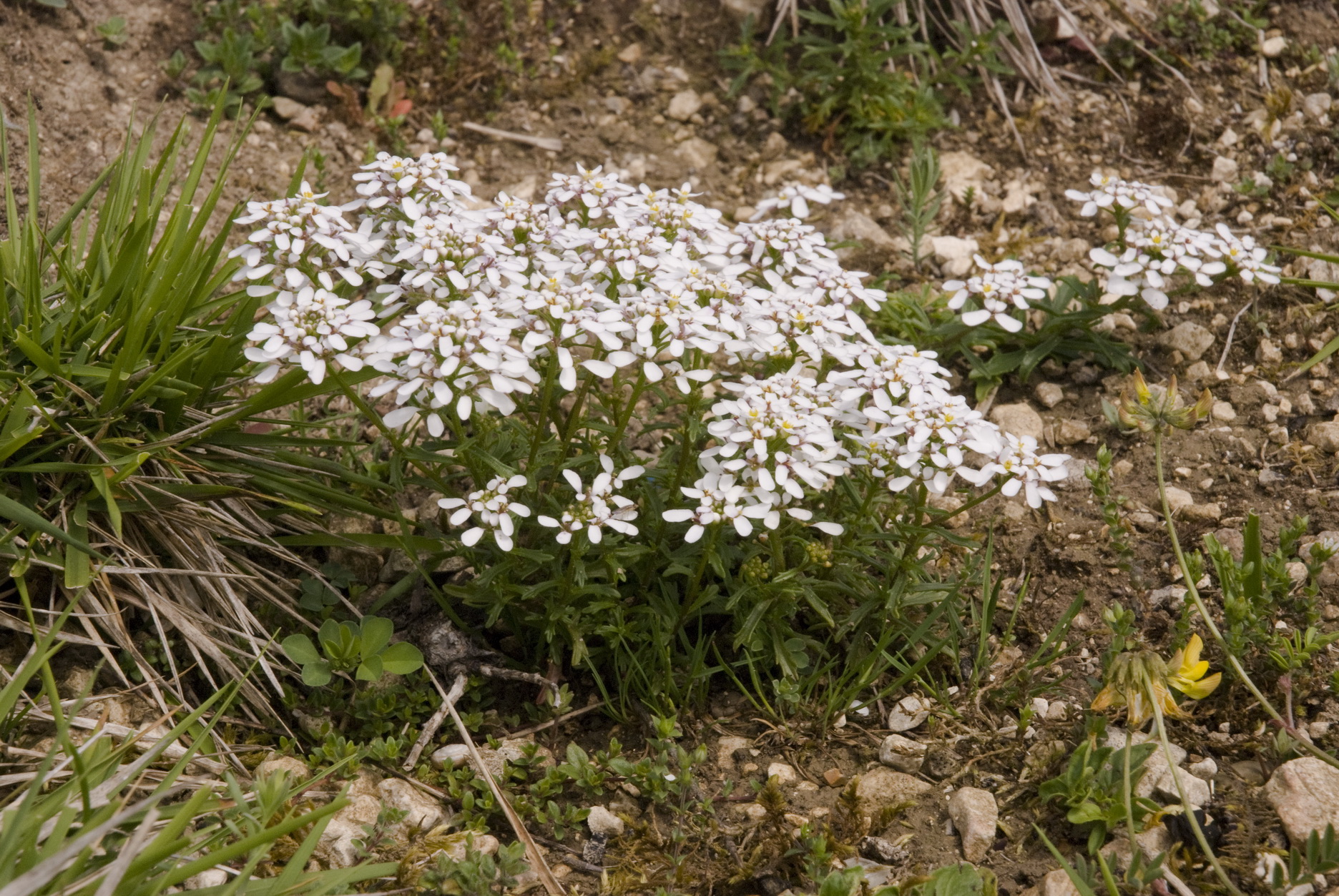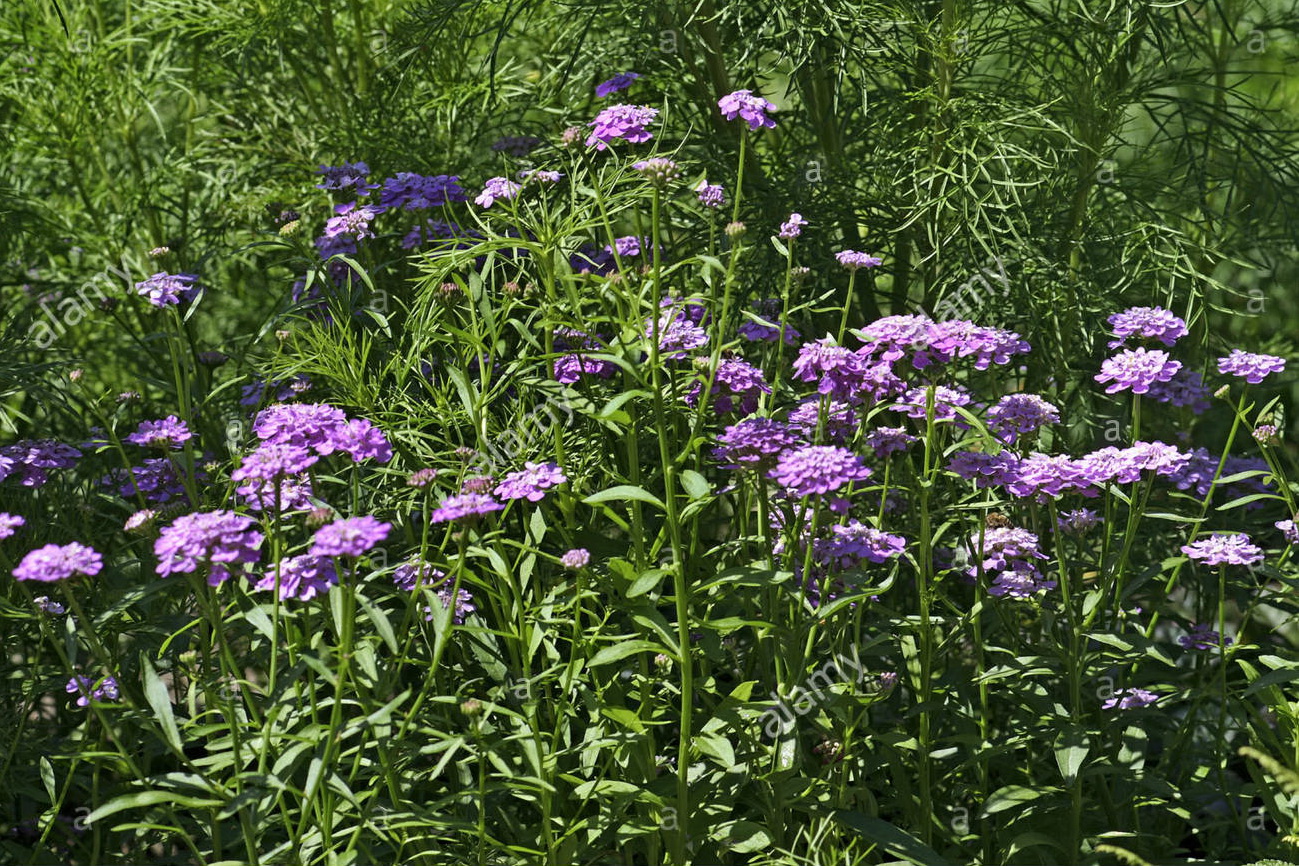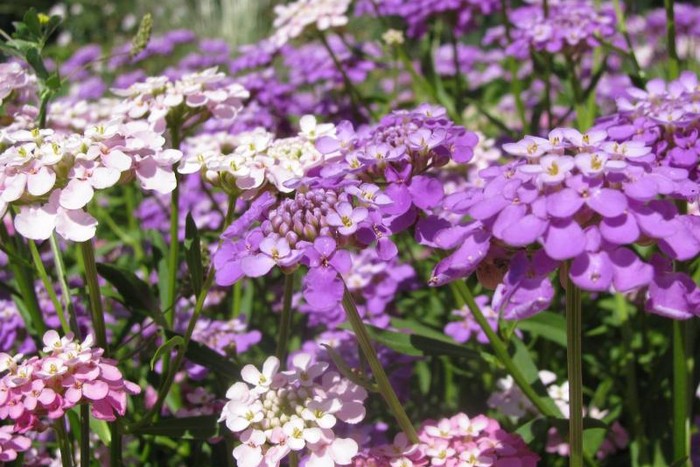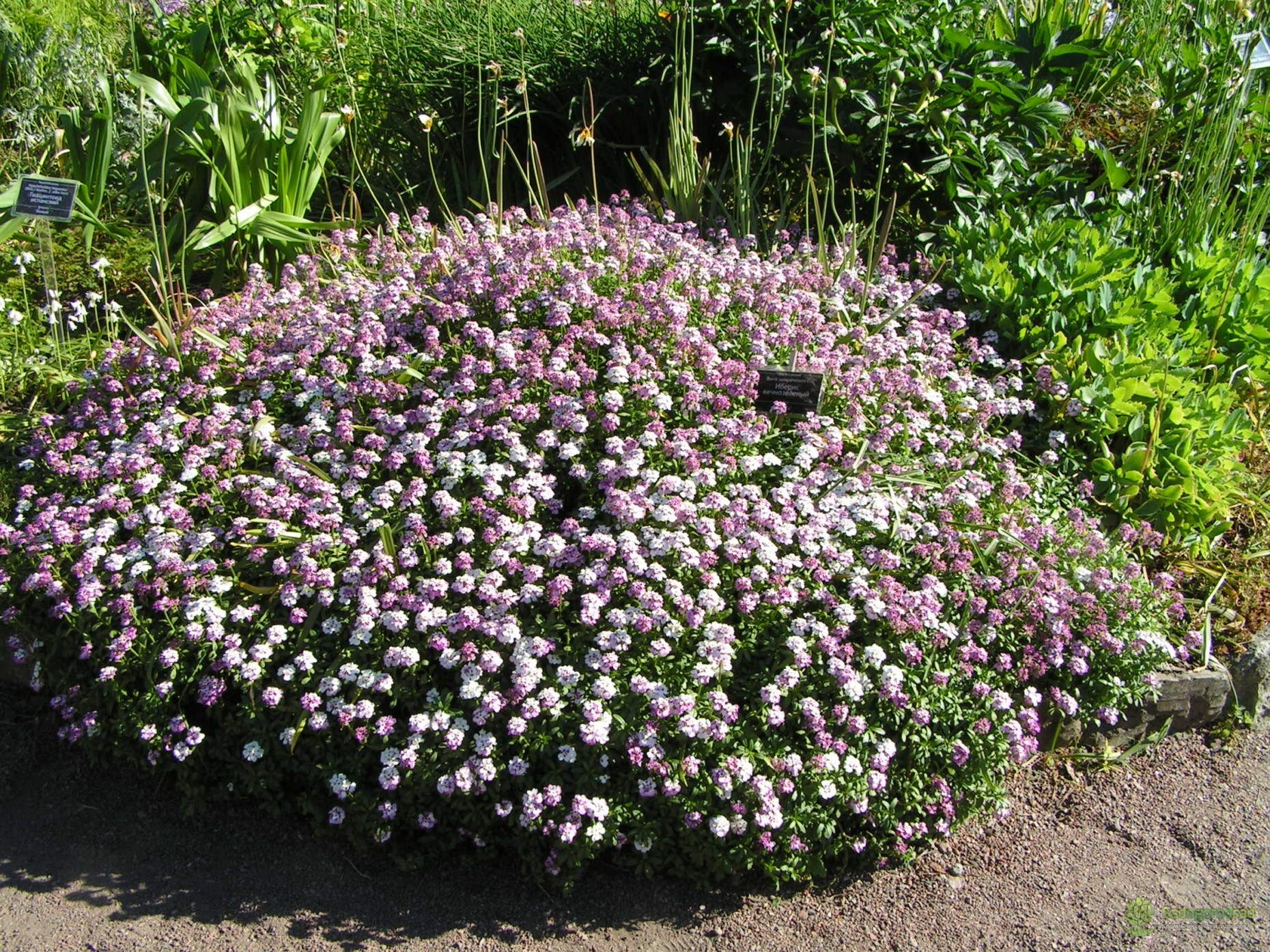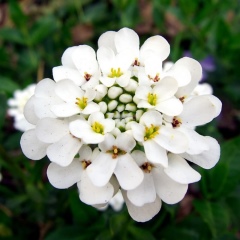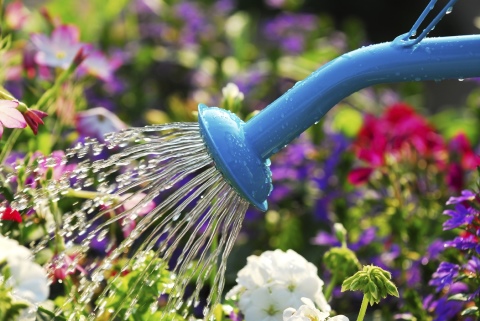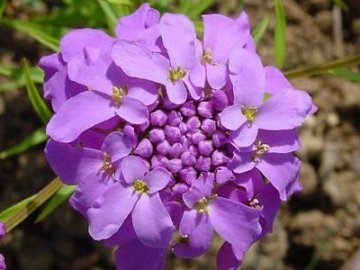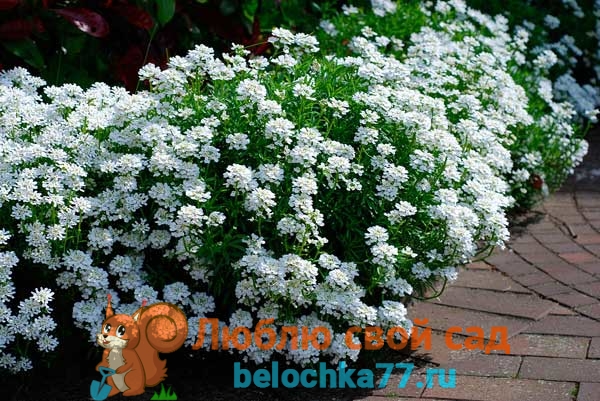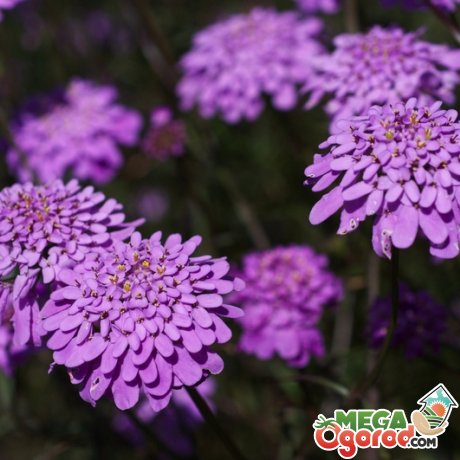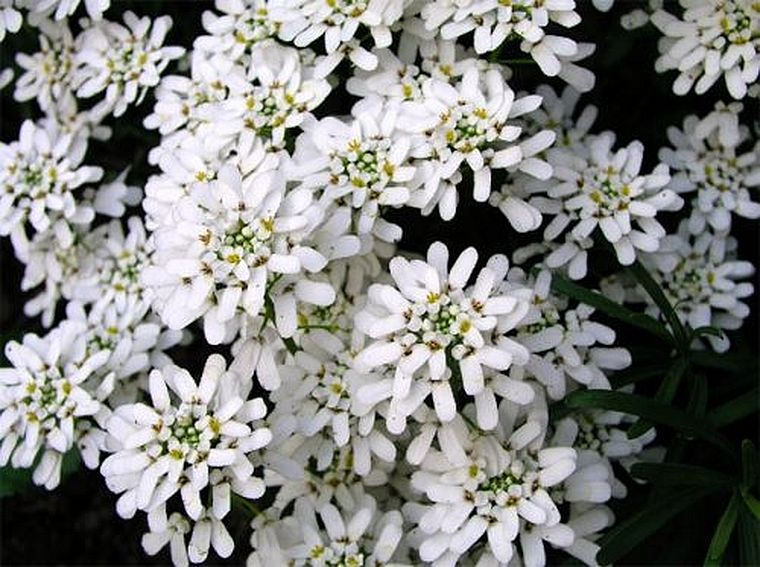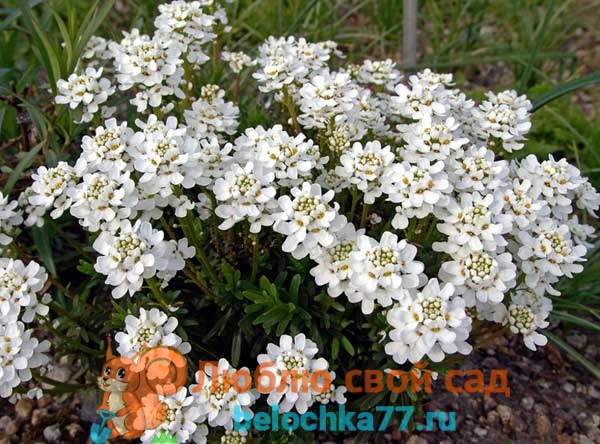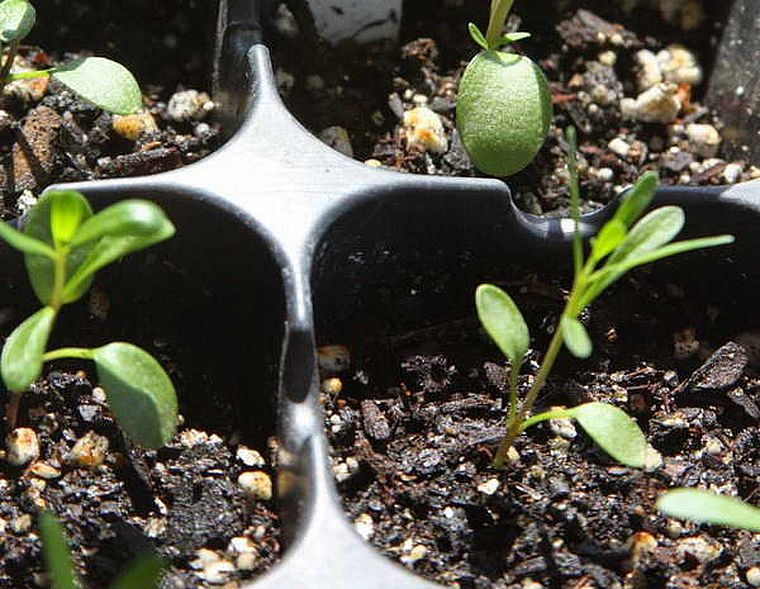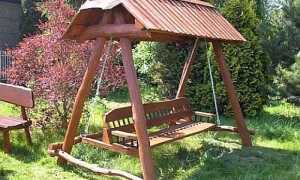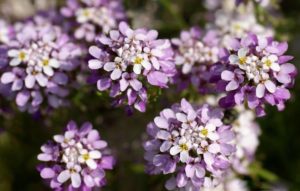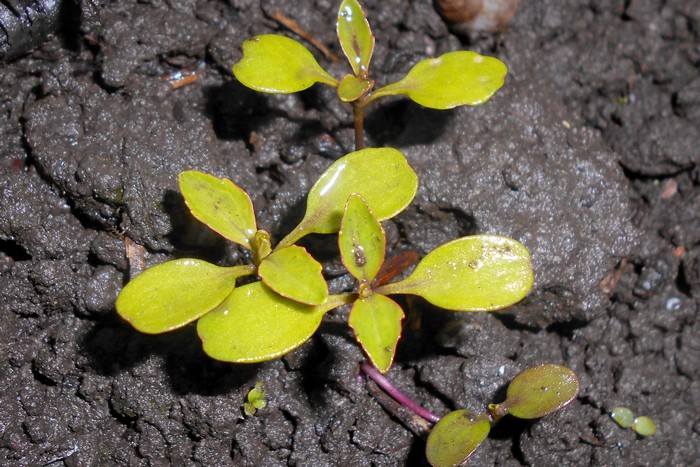Types and varieties
There are many common types and varieties of Iberis. Different representatives of this family have their own distinctive features and external characteristics. Let's get to know them better.

Bitter (Iberis amara)
Such a one-year-old pet is capable of reaching a height of 0.3 m in height. Shoots diverge from its root collar, on the surface of which you can notice a characteristic pubescence. Usually the leaf blades are inversely lanceolate. The leaves are arranged alternately and have a serrated edge. The diameter of the flowers usually ranges from 1.5 to 2 cm. Their color varies. They can be white or slightly lilac. Flowers are part of racemose inflorescences characterized by a columnar structure. Cultivation of this species began in the 16th century.
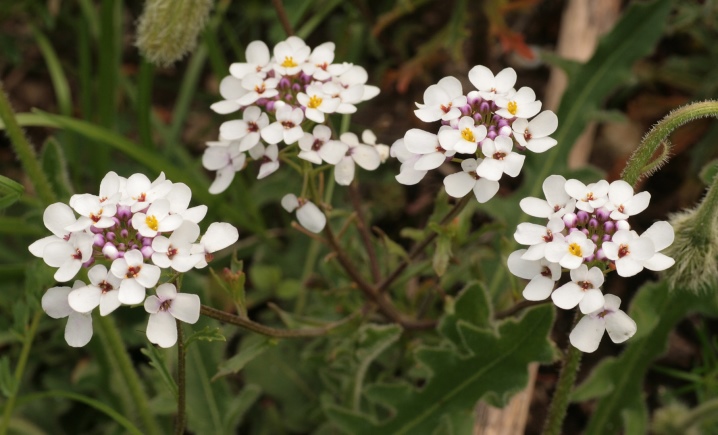
Several well-known varieties of bitter Iberis proved to be the most popular and in demand.
"Tom Tumb". In height, representatives of this variety range from 12 to 15 cm. The flowers of the plants are distinguished by a simple but attractive snow-white color.

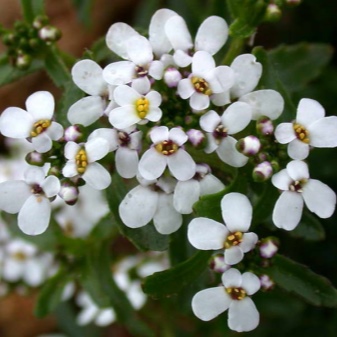
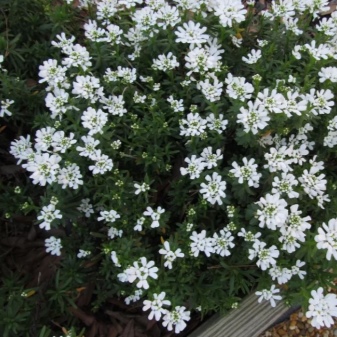



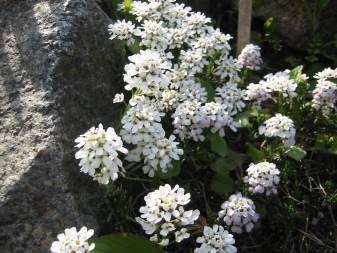
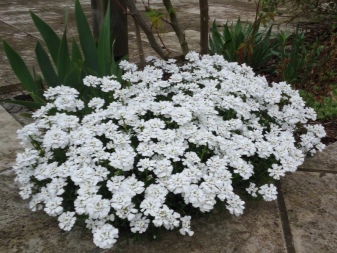
Umbrella
Spectacular annual. Its height parameter can reach 0.4 m. The shoots are branched, have a smooth structure and grow naked. The leaves also grow alternately and are lanceolate. The flowers exude a very pleasant, unobtrusive aroma. They can be painted in a wide variety of colors - from lilac to white. Flowers are included in a combination of inflorescences that are naturally corymbose. From the moment of sowing to the beginning of flowering, it usually takes no more than 8-10 weeks. The flowering itself, in most cases, takes 8 weeks.

There are several of the most popular and common varieties of umbrella flowers. Below are some of them.
Fairy Mixtche. The named bush can grow up to 20-25 cm in height. It is usually presented as a seed mixture with a variety of colors.

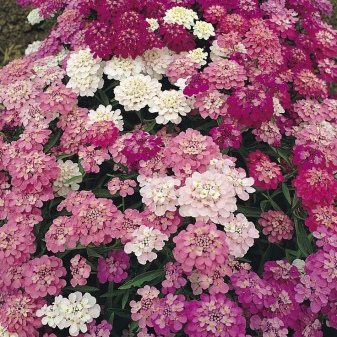
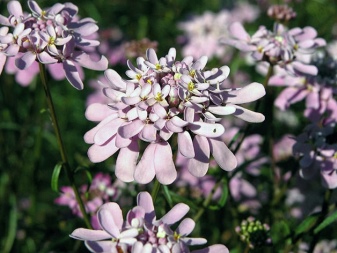

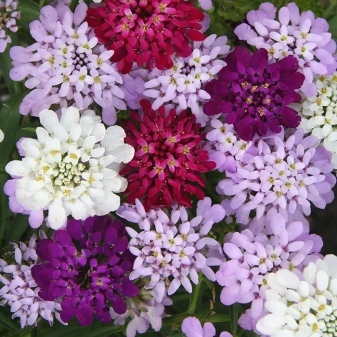


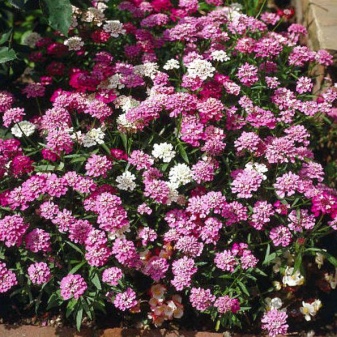
Evergreen
The current type of Iberis, which is preferred by many gardeners. Such representatives of the culture are semi-dwarf perennial plants. Their usual height varies from 0.3 to 0.4 m. The leaf blades are characterized by an oblong configuration, their length is usually 7 cm. The edges of the foliage are integral, the surface is glossy. The color is dark green. Inflorescences of evergreen plants are in the shape of an umbrella. Their average diameter is 5 cm. The flowers are snow-white in color, and their diameter is about 15 mm. The plant in question blooms gorgeous for 20 days. In certain situations, during the last summer days, you can witness re-flowering.

The most famous and popular varieties of evergreen Iberis are the options listed below.
"Dana". Low bushes, the growth of which rarely exceeds 15 cm. They are distinguished by abundant flowering.

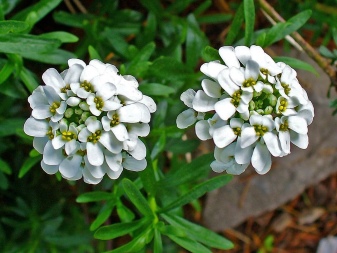
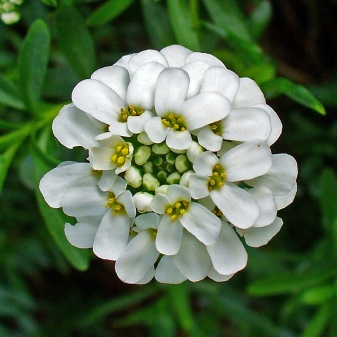



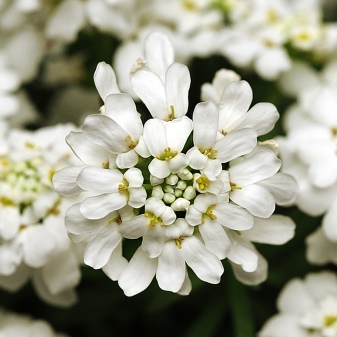

Gibraltar
Iberis of this variety is considered semi-evergreen. On his bush there are a large number of small and delicate flowers that have a beautiful pink color. The average diameter of the bushes reaches 0.4 m, and their average height is 0.25 m.
"Gibraltar" does not lose its decorative effect throughout the season. It is a winter-hardy variety.
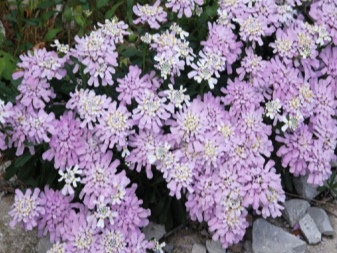
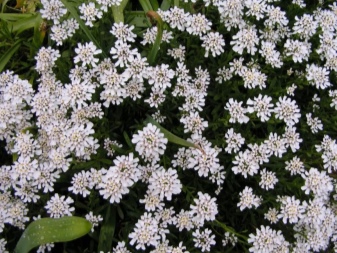
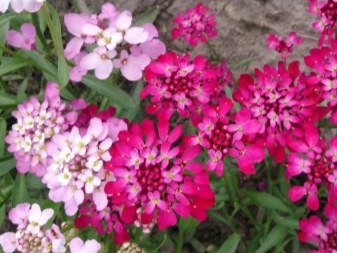



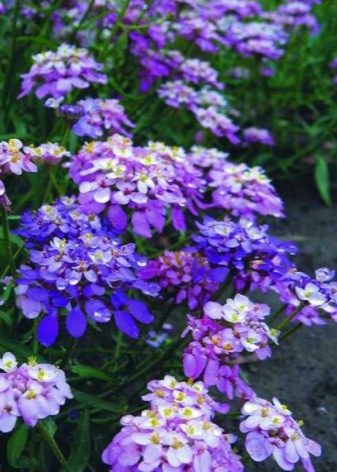

Crimean
The height parameter of the bushes belonging to the Crimean species can be only from 5 to 10 cm. These are not the tallest plants with green-gray leaf blades. The latter are distinguished by characteristic pubescence on the upper part. The buds of the variety are purple in color, and the flowers that have already opened are white.
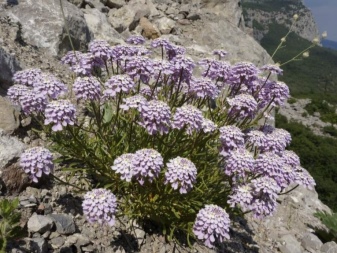

Rocky
Nice view of Iberis. The height of these evergreen members of the family can be from 10 to 15 cm.The formation of dense curtains with a neat rounded shape is allowed. When such a plant is in the flowering stage, an interesting effect is formed that it is slightly dusted with snow. All of these plants have an attractive appearance and exude a pleasant aroma. Such green pets can be a spectacular decoration for a garden plot or a local area.
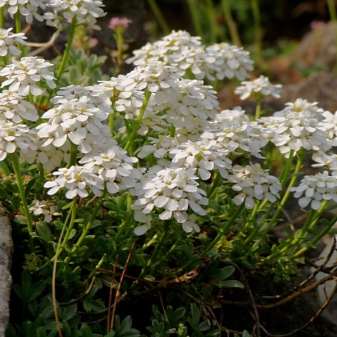
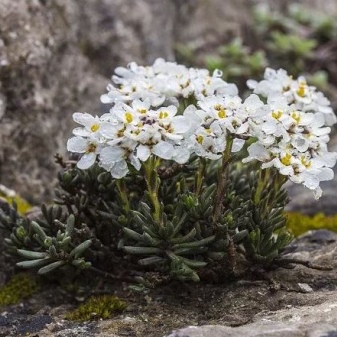
Common diseases and pests
Let's start with the pests that are dangerous to Iberis. Earthen fleas feed on leaf plates - they eat large holes in them. Mealy worms and aphids settle on the flowers, from which one should not expect anything good either. Potash soap is considered a good means of fighting aphids. Dissolve 200 g of the substance in 5-6 liters of water. The resulting solution is used to treat infected flowers. After seven days, the procedure is repeated.
Fungus is another common attack of the Iberis genus. The easiest way to prevent the problem is to try to cure plants already affected by the fungus. Before planting, a plot of land is treated with fungicides. Are the roots already rotting? Affected specimens are dug up and burned, the place of growth is carefully processed.

There are not so many pests of this plant, so with proper care, Iberis will not create problems for you.
Description of Iberis: varieties and varieties
The culture is represented by both perennial and annual shrubs. Gardeners prefer the following types of cultivation:
gibraltar. Wide, up to half a meter in diameter, shrubs are decorated with narrow evergreen foliage. Flowers of a light pink shade of small size change color to white over time. Even in a harsh climate, the Gibraltarian blooms twice a season. Bushes grow up to 20 cmThe most popular varieties of this Iberis are Candytaft and Candy Tuff. In the latter, large lilac inflorescences resemble dahlias;
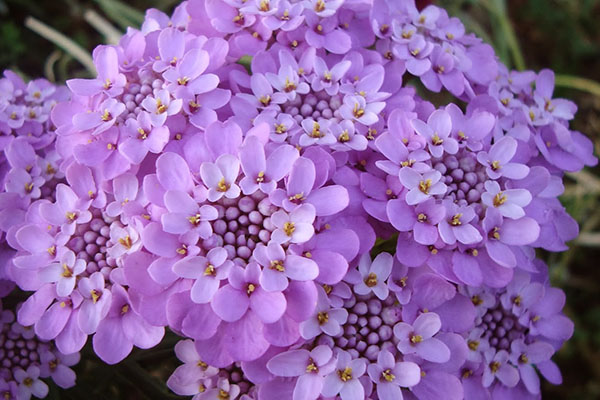
What does Iberis look like?
- Iberis evergreen has tough leathery foliage with a bright malachite color. Globular bushes grow up to 40 cm, white umbellate inflorescences adorn the flower bed for a month. Ripe buds produce a lot of seed material with good germination. The shrub is unpretentious to the soil, but prefers sandy or stony soil. Famous varieties include Fidel, Snowflake, Little Jam, Iberis evergreen Whiteworth;
- Crimean - dwarf perennial, not exceeding 7 cm in height, which can be planted anywhere. In winter, it needs a special shelter due to poor frost tolerance. Decorated with dense green foliage resembling shoulder blades. Purple buds after final ripening become a snow-white shade. Crimean blooms in April days;
- rocky grows up to 13 cm, shrubs are voluminous and dense. During the flowering period, they resemble a spruce sprinkled with snow. Buds with a cream or pinkish color, stay on the bushes for a little more than a month. Popular varieties include Pygmaea and Hyacintenblutige Riesen.
For your information! Umbelliferae Iberis is an annual plant growing up to 40 cm. White flowers are collected in inflorescences, flowering lasts about 3 weeks. Iberis umbrella Pomegranate ice is distinguished by buds painted in white and red contrasting shades. Grows up to 40 cm in height.

Iberis umbrella
Growing from seeds
Iberis can be grown from seeds planted in time in a suitable and prepared soil in advance. Usually, sowing is carried out in the 2nd half of April, when the risk of frost is minimized. The best air temperature will be + 10 ... 15 degrees Celsius. But we must not forget about the possible overheating of the earth. If it is not yet fully warmed up, it is recommended to wait a little with planting at least until the end of the month. To achieve constant flowering, the seeds must be planted, taking a break of 2-3 weeks.
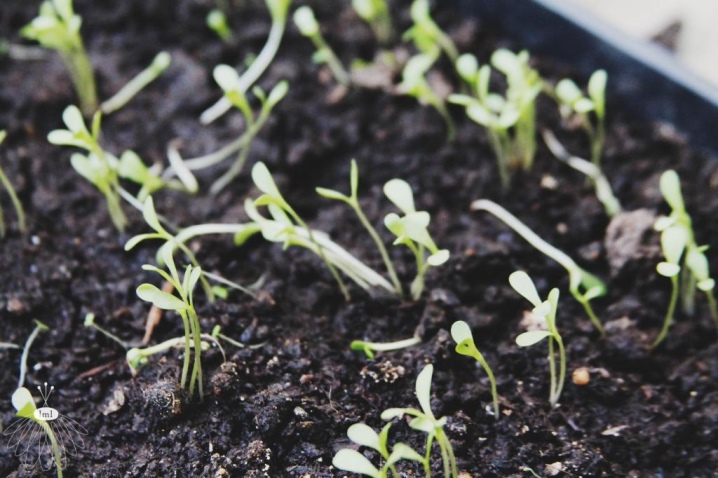
Consider what should be the sequence of actions for planting seeds in the ground.
- First, you need to carefully dig holes, the depth of which is no more than 10 cm. A distance of 12-15 cm should be left between them - it will be quite enough. The last point should not be neglected, since it is very important - on fertile soil, the plant in question can grow too much.
- Next, you need to distribute the seeds, and sprinkle a little earth on them. Plants should not be planted too deep. If necessary, the earth will need to be slightly moistened. Various varieties of Iberian (the second name of Iberis) are recommended to be placed at a noticeable distance from each other. Otherwise, there is a risk of over-pollination.
- Then you just have to wait until the first sprouts hatch. They will need to be thinned out as carefully and thoroughly as possible. The space between individual bushes should be about 20-25 cm.
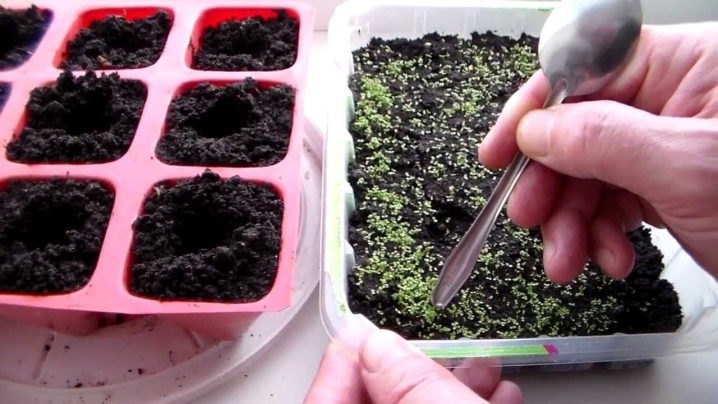
If the temperature indicator is from +18 to +20 degrees, sprouts can be expected after 7-10 days. If the temperature is about +15 degrees, then it will take about 14-20 days. You can grow a culture from seeds in another way - by preparing seedlings. It is better to set aside such work at the very beginning of spring. It is necessary to prepare loose soil. The seeds should be immersed in it to a depth of 1 mm. On top you need sand filling - the layer should be small.
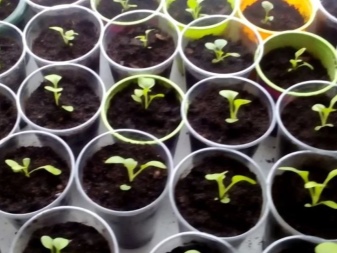
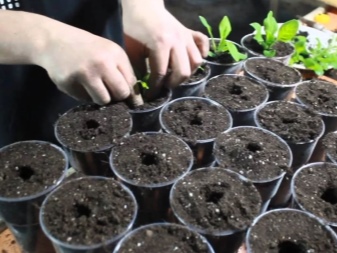
Care features

Growing Iberis is not difficult at all, and even inexperienced gardeners can handle it. Watering should be done only during drought periods. Such flowers can do without dressing, however, for even more lush flowering, Iberis can be fed 1 or 2 times per season with complex fertilizer. In order for the plant to grow and develop normally, it needs to remove fading flowers in time. When the plants have faded, they need to shorten the shoots by 1/3 part, in this case the bushes will look very neat. A perennial plant that has turned 5 years old needs to be planted, otherwise the flowers will become smaller, and the bush will also become less effective.
Diseases and pests
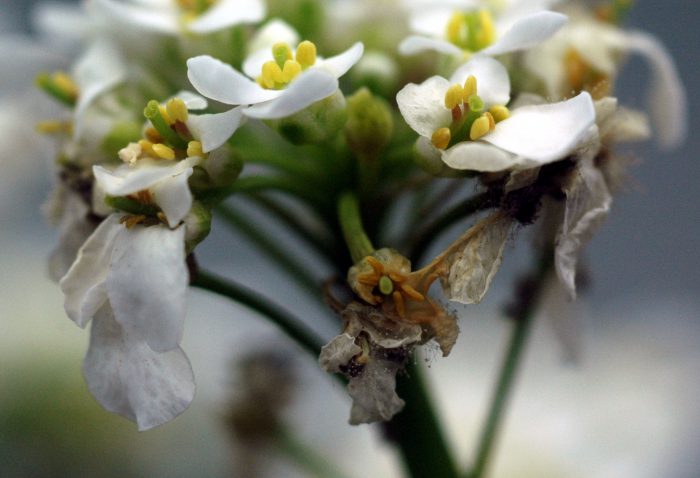
Of the pests, cabbage aphids, mealybugs and earthen fleas can settle on such flowers. So that the fleas eating holes in the leaf plates go away, it is recommended to moisten the soil near the bush. To get rid of aphids, you will need to treat the infected flower with a solution of liquid potassium soap (for half a bucket of water, 150-200 g of the substance). If necessary, it will be possible to re-process it after 7 days. To get rid of mealybugs, you need to treat the bushes with Mospilan, Actar or Fitoverm. Moreover, such processing will need to be carried out one more time in 7-15 days after the first.
The root system of such a plant is susceptible to fungal diseases. For preventive purposes, before planting such a flower, it is necessary to water the area with a fungicidal agent. In the event that the roots begin to rot, then the infected specimens will need to be dug up and burned, and the place where they grew should be disinfected. Such a flower is very resistant to other diseases. If it is watered according to all the rules, then the fungal disease of the Iberis will not be scary.
Landing in open ground: questions and answers
We answer popular questions related to Iberis, its planting and care in the open field.
When to plant?
In order for the plant to take root well, planting in open soil is carried out when the frost has passed. This is usually mid-May. Choose a site with good access to the sun, rocky ground. Too wet soil will not work. Stagnation forms in the roots, which has a bad effect on the root system.
How is the disembarkation done?
- The seedlings are removed from the container in which they were grown. The procedure is performed very carefully so as not to injure the root. To do this, you can take a seedling along with a lump of earth.
- Bushes are planted in the soil at a distance of 12-15 centimeters.
- The earth is carefully rammed, the sprouts are watered.
- A little trick for those who would like to get Iberis of different colors and decided to plant a variety of varieties. Maintain a decent distance between the bushes - they can get dusty.
Further reproduction is possible by cuttings, division.

It is better to plant Iberis in late spring, after the last frost.
Plant diseases and pests
Despite the fact that brachycoma is a rather unpretentious plant, it is still sometimes attacked by certain diseases and pests:
Decay of the stem and root. Excessive watering can be the cause of the disease. To get rid of this problem, it is worth replanting the plant, ensuring good drainage, and be sure to remove all damaged stems.
Snail attack. These molluscs damage the leaves, which leads to the death of the plant. You can get rid of them by collecting them or spraying the bush with special repellents, which can be purchased at flower shops.
Whitefly lesion. Parasites leave their secretions on the leaves of plants, which eat away at their surface, and the larvae feed on juices. The fight takes place with the help of chemicals.
Now you know everything about flowers like brachikoma. You learned about planting and subsequent care of these flowers in the open field, looked at interesting photos that are offered in our article. The choice is yours - or not to plant these flowers on your plot or balcony.
Outcomes
The light charm of fragrant iberis blossoms will be a good addition to any landscape. Plants feel great in our climatic zone, they are easy to care for. If you plant a pepper pot along the edges of the curb, they will shine with new colors, they will look very extraordinary. The gentle palette of the stennik goes well with any culture, therefore, in the rock gardens and rocky hills, a representative of the cabbage genus will definitely take its place. An especially successful ensemble will turn out in combination with large-flowered bells, undersized marigolds, phlox. And with neighbors such as cypress and dwarf pine, Iberis will always live peacefully and amicably.

